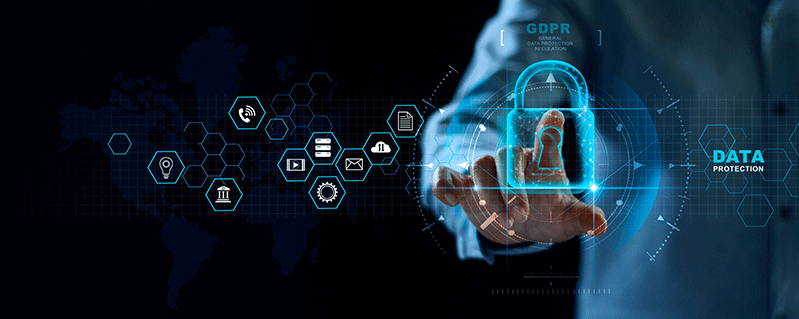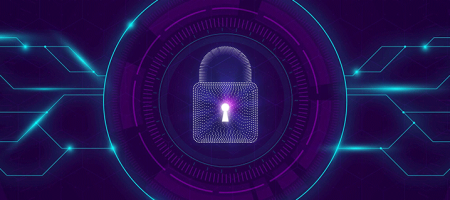HIPAA is the most important legislation for anyone who wants to create healthcare-related software for the US market. While developing mHealth apps is complex, complying with HIPAA and even merely understanding all its requirements is a much more significant challenge.
What is HIPAA?
HIPAA is the Health Insurance Portability and Accountability Act. The part of the act we are interested in as developers or owners of a healthcare software product is its protection against data fraud.
Smartphone apps that in any way process, receive, or send private data should comply with HIPAA.
In recent years, smartphones and wearables have become widely used in hospitals and insurance companies to connect doctors to patients and track their health. Smartphone apps that in any way process, receive, or send private data should comply with HIPAA. Therefore, mHealth App development with HIPAA requirements is currently a popular type of development, and that is why Meddev soft is using it.
The first thing you need to find out when developing a medical application for the US market is what kind of information you will store and transfer via your application.
There are two types of information:
- PHI (protected health information) — includes bills from doctors, emails, MRI scans, blood test results, and any other medical information (note that geolocation information that locates a person within a territory smaller than a state is also PHI).
- CHI (consumer health information) — includes data you can receive from a fitness tracker such as the number of calories burned, heart rate readings, and the number of steps walked.
The rule here is simple: If your application processes, stores, or transfers any PHI data, it must be HIPAA compliant.
Why is HIPAA important?
For patients:
HIPAA protects patients from identity theft, a widespread crime linked to personal data fraud.
This is especially true in the US, where social security numbers are extremely important and are linked to almost all personal data of an individual.
Identity theft can result in large debts, massive financial losses, and harmful fake claims for a person.
For hospitals:
What happens if a company fails to meet HIPAA requirements?
In two words, massive fines can sometimes reach a couple of million dollars. Each data breach case results in a $100 to $50,000 fine. If a data breach occurs because of a hospital’s non-compliance with HIPAA, each person whose data was exposed is a separate case. The penalties against one entity are not to exceed $1,500,000 in one year for one category.
How to make your app HIPAA compliant?
To make your app project HIPAA compliant, you need to follow four rules:
- Privacy rule
- Security rule
- Enforcement rule
- Breach notification rule
The main rule for any developer who works on medical applications is the security rule, which describes technical and physical safeguards:
Physical safeguards include protecting the backend, data transfer networks, and user devices like iPhones or any other devices on iOS or Android that can be physically compromised, stolen, or lost.
To ensure your app’s security, you should enforce regular authentication or make it impossible to access the application without authentication. To make the authentication process safe without sacrificing the user-friendliness of your app, you can allow fingerprint authentication. This will protect your app in case a device is lost or stolen.
Make sure that memory cards in mobile devices do not store any PHI. Memory cards are somewhat vulnerable as they do not have strict access permissions.
To create a secure app that’s fully HIPAA compliant, using reliable providers, you need to encrypt the data in the software you develop and make sure that it cannot be accessed if the server or device is physically compromised.
Technical safeguards focus on thoroughly encrypting all data that are transferred between or stored on devices and servers. Technical safeguards include:
- Unique user identification
- Emergency access procedures
- Automatic logoff
Another rule you need to keep in mind is the minimum necessity rule: Do not receive and store more data than you need or store data for longer than is required for your work.
Avoid sending any PHI data in push notifications and leaking this type of information into backups and logs.
Steps to creating a HIPAA compliant medical app.
Step 1: Find an expert.
Do not attempt to meet all HIPAA requirements without guidance if you do not have enough experience. It is always better to hire a third-party expert to consult and audit your system. You can also outsource the whole HIPAA compliant app development process to an experienced team. Finding an expert is useful both for startups and for big healthcare companies.
Step 2: Evaluate patient data.
Ensure you need all the data you collect from patients and figure out what data can be categorized as PHI. Once you do that, see what PHI data you can avoid storing or transferring through your mobile app.
Step 3: Find third-party solutions that are already HIPAA compliant.
Providing HIPAA compliance for an application is very expensive. It will include the development of a whole system that meets physical and technical security requirements. You will also need to spend money auditing this system, getting all the necessary certifications, etc.
The best solution to save time, money, and effort is to use a ready infrastructure and solutions that are already HIPAA compliant instead of developing HIPAA compliant mobile apps from scratch. This is called IaaS — Infrastructure as a service. For example, Amazon Web Services and TrueVault are compliant with HIPAA and are responsible for data security.
Step 4: Encrypt all stored and transferred data.
Use security best practices to encrypt the sensitive data of your patients. Make sure there are no security breaches and use several levels of encryption and obfuscation. Take care about encrypting stored data to protect it from being stolen from a device.
Step 5: Maintain and test your app for security.
Testing is significant, and you need to do it after every update. Test your application both statically and dynamically and consult with an expert to check that the documentation is up to date.
Maintenance is a constant process you need to perform to keep your application safe. Libraries, tools, and frameworks for building an app and ensuring its security are constantly being updated. After you create a HIPAA-compliant mHealth app, you will need to make sure you update them regularly; otherwise, a security breach can occur.
Protecting user data and integrating a mobile app into a HIPAA compliant system is a non-trivial task for any healthcare company or institution. It is necessary, though, as penalties for violating this law are massive.
Our tip for you is to make sure to consult with and get auditing services from our experts at Meddev soft, who has experience creating secure HIPAA compliant medical apps.
Remember to assess how much information you need for your app to operate and bring value to your users. HIPAA compliant apps do not collect any information that is not necessary; if yours does, you’ll be spending resources on protecting the information you don’t need.
MedDevSOFT can help you with security issues and HIPAA compliance, so if you need a consultation or mobile development services, do not hesitate to contact us.







